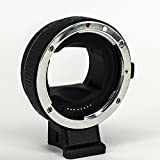Which lens in kit together with the new Reflex? Our advice on what to buy to be able to learn quickly and not have to change lenses after some time
What should I buy to "get started" and learn how to use the camera? This doubt afflicts many people who are approaching photography for the first time. It is often the source of a thousand doubts and uncertainties.
In this the producers do not help at all. There are many kits available, but how to get through all this tide of goals?
In this guide we will refer to sensor cameras APS-C, as they are the most popular with beginners (due to the affordable costs).
What must a kit lens guarantee?
The characteristics that must guarantee a lens taken as a kit with the reflex there are two:
- Let the user try the different focal lengths and their performance
- Teaching the concept of depth of field
With these two points we intend to make it clear how the area in focus varies as the aperture used varies and how the perspective of a scene varies by changing the available angle of view. This is impossible for a single goal, wanting to spend the minimum possible. But it is very feasible using two lenses. If we are determined to use an interchangeable lens system, we might as well take advantage of this advantage. The ideal is therefore to establish what these two objectives should be to aim for. The aim is to avoid being in the situation of having to resell, after a few months, part of the equipment because it is unsatisfactory.
The first purchase | Which lens kit with the Reflex? What to choose and why
So the first question to ask yourself, after choosing your camera, is: which lens to take?
Forget the various 18-55. What you need is a 16-105 or an 18-135
This type of zoom lens will allow you to experiment with focal lengths ranging from wide-angle to telephoto. Their price is not too high, and besides, they are not "bottlenecks". So in the future, even if we take other lenses, we can continue to use them as lenses for light rides, when we don't want to carry all the equipment. It will also prevent you from making "blind purchases" in the future. It is also a good companion to "experiment" and try before making other purchases.
Make sure to take it together with the camera to get a little discount, otherwise you will have to bear a fairly substantial expense. Another solution is to turn to the second-hand market: you can save up to half the price on the new one.
The second purchase | Which lens kit with the Reflex? What to choose and why
After trying your handyman lens, after some time you will begin to notice its limitations. You are inside the house and you want to take a picture, but there is little light in the house and all the photos you take are "victims" of a grain called "noise". How to avoid it? The solution in this case too is simple.
By purchasing a prime lens
In this thing the best choice is a 35 mm or 24mm. It will allow you not to need too high ISO indoors, and then magically the Noise will be just a memory. Moreover, having this lens with a very open aperture, it will allow you to have photos with a quality blur! But above all it will allow you to learn how to use the Depth of Field. Combined with the "handyman" you will have an excellent starting kit, which will be able to give you a lot of satisfaction with a low cost. You will also be able to calmly evaluate your subsequent purchases by forming your photographic style little by little, without haste and without feeling limited by anything. Below we leave you some advice for the purchase of kits (offered by Nikon, Canon, Sony) and a bright prime lens.
 Nikon D3500 Digital SLR Camera with Nikkor AF-S 18 / 105VR Lens, 24,2 Megapixel, 3 "LCD, Black
Nikon D3500 Digital SLR Camera with Nikkor AF-S 18 / 105VR Lens, 24,2 Megapixel, 3 "LCD, Black - 24,2 megapixel DX format sensor

















